The Short Story of Fred Hampton, Assassinated Black Panther Leader - Ted Pearson (People's World)
Fifty Years After the Police Murders of Black Panthers Fred Hampton and Mark Clark - Norman Stockwell and Frances Madeson interviewing Jeffrey Haas (The Progressive)
Fred Hampton - On The Importance Of Education Prior To Action - Chicago Teachers Union
The Short Story of Fred Hampton, Assassinated Black Panther Leader
By Ted Pearson
December 4, 2019
People's World
This is an excerpted version of an article that originally appeared in People’s World’s predecessor publication, Daily World, on January 17, 1970. The short political biography appeared just weeks after the assassination of Fred Hampton, a leader of the Black Panther Party. It is reprinted now on the occasion of the 50th anniversary of his murder.
CHICAGO—The police of Cook County took the life of 21-year-old Fred Hampton and 20-year-old Mark Clark in one of the most sadistic of all the genocidal attacks on the Black Panther Party. That was Dec. 4, 1969. Sine then, thousands have visited the apartment where the two youths were gunned down in their sleep. The incident loosed the united fury of the black community against the national governmental conspiracy to exterminate the Panthers.
But it was not the horror and barbarism of these murders alone that united the community. Fred Hampton is one of 28 Panthers who have died across the country, killed by police. Many had felt a growing anger as the extermination drive against Panthers became more obvious, but it was the incredible death of Fred Hampton that galvanized the community and crystallized its fears and outrage.
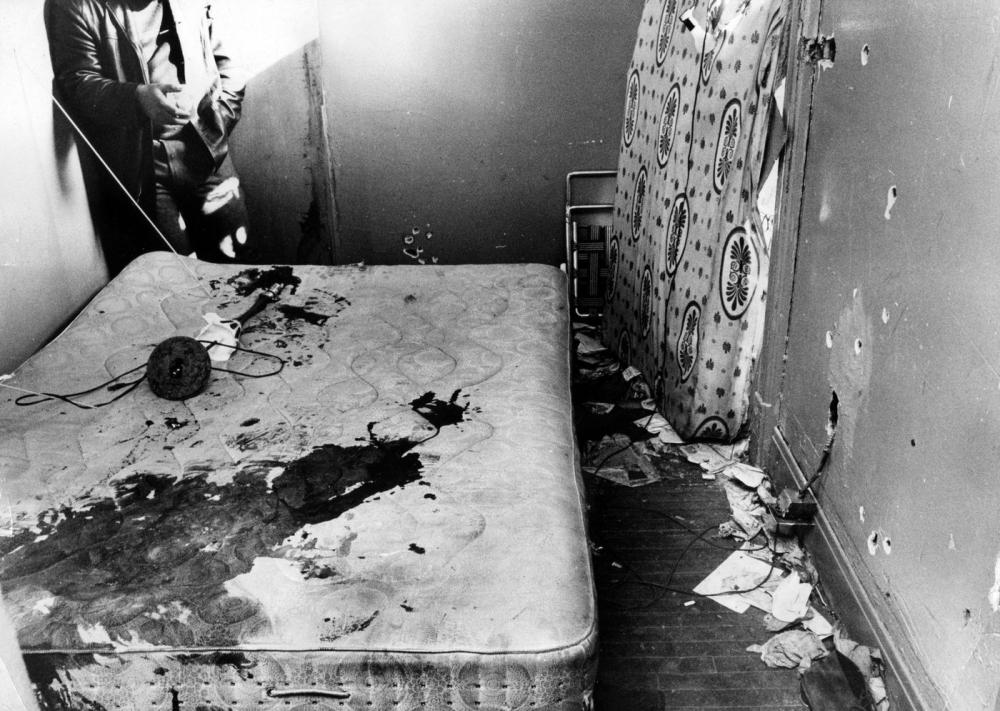
James OLeary / Chicago Tribune
…
Fred Hampton touched the lives of many people, white and black, both those with whom he agreed and those with whom he disagreed.
This young man started as a leader of the Youth Council of the NAACP in suburban Maywood, Ill., and rose to a position of national leadership in the Black Panther Party. Always, in his brief life, people observed his eloquent hate for exploitation and racism but he never hated working people, black or white. In the eyes of thousands who knew him, he was a young Martin Luther King or Malcolm X, of their stature. It was this that led him inexorably towards Marxism-Leninism and a class analysis of the capitalist system. Though he had his share of contradictions and seemingly anti-white frustrations, his thrust was towards the unity of black and white. It was this aspect of his practice and viewpoint, among others, that shocked the nation into an awareness of the genocidal significance of the assault upon the Black Panther Party.
Fred Hampton was born Aug. 30, 1948, to Francis and Iberia Hampton, two factory workers among the millions of black people who are mislabeled “middle class’ by bourgeois sociologists. Hampton’s father, Francis, today works at the same job he did when Fred was born—a painter at the sprawling Argo, Ill., refinery of the Corn Products Company. His mother has also worked at that refinery on an assembly line for 14 years….
Both active members of Local 7-507 of the Oil and Chemical Workers Union, Mr. and Mrs. Hampton have devoted their lives, since coming to Chicago from Haynesville, La., almost 25 years ago, to forging a decent life for their family. Although not agreeing with everything Fred did, they always supported him. They understood that he was dedicated to the liberation of black people. There is no doubt that Mrs. Hampton, her warm concern for people, played an important role in shaping the future of her youngest child, Fred.
Fred Hampton attended school across the street from his family home in Maywood…. He went on to Proviso East High School, graduating with high grades in 1966…. During his last two years Proviso East, “racial trouble” broke out sporadically at the school. As the suburb’s black population gradually increased, certain students from nearby lily-white Broadview and Melrose Park increasingly attacked and insulted the black students from Maywood with encouragement and help from some of the teachers. Hampton joined the Inter-racial Cross Section Committee at Proviso East, and soon became respected among both black and white for his attempts to “cool” the situation. Already at that time, his brother Bill could say, “He was a leader to whites as much as to the blacks at the school.” On one occasion, friends recall, Fred met with a group of long-haired, leather-jacketed white toughs who had been mainly involved in the troubles. After a long and heated discussion, Hampton, or “Hamp” as his friends knew him, convinced them it was “the system” that was oppressing them. “You are as oppressed as we are,” Hampton told them, “ ‘cause you aren’t even together.”
The result was a united demand from the students for a greater voice in school affairs and an end to racist practices there.
However, the powers that be had other ideas. After this first meeting, where these demands were presented, there were no more. The school administrators turned a deaf ear to proposed solutions and brought in the police. Not even the Maywood police, but the Cook Country police, under the command of the notorious racist Sheriff Joe Woods, whose plan for arming a vigilante “posse” to deal with “riots” brought him national attention in 1969.
Evidently, the administrators…preferred to have “racial trouble” rather than face the united demands of the working-class black and white students at the school, led by Fred Hampton. One of Hamp’s first arrests came during an early “disturbance” in November 1967 when he tried to stop a fight between black and white youth outside the school. “Fred got between the two and held up his hands to stop them,” Bill Hampton recalled, “and the police arrested him and beat him.”
It was a result of his obvious leadership abilities that the NAACP Maywood branch approached him then to work with their Youth Council. Hamp threw himself into the council’s work. He built it virtually from scratch, from a tiny organization to one of 700 young people, including every single black youth in the town between the ages of 15 and 21.
During the summer of 1967, Hampton sensed that the need for recreational facilities for Maywood’s black youth was a key to uniting the community. The municipal swimming pool in adjoining Melrose Park was the only one in the area. Lake Michigan’s famous beaches were 20 miles away. Restricted to residents of Melrose Park, the “non-discriminatory policy” of pool officials somehow allowed white Maywood youth to use the pool while black youth were invariable turned away.
Rather than insisting on integrating the pool, the NAACP Youth Council demanded that Maywood officials build another one for Maywood youth, white and black. After many meetings and much stalling of the village administration under former Mayor Edgar Elbert, the youths turned to the streets. Their first demonstration turned out only about a hundred. But Elbert’s swift action in calling in Sheriff Joe Woods’ stormtroopers led to the first in a series of violent uprisings in Maywood. Subsequent demonstrations swelled to many hundreds. The people became incensed when Woods’ men arrested Hampton and brutally beat him before the yes of the demonstrators and onlookers for peacefully petitioning the village board.
This, Hampton’s very first arrest, played an important role in forming his conviction that black people must defend themselves in the face of police brutality. It was the first of many arrests, beatings, and frame-ups at the hands of police, invariable committed while Hampton was playing the role of unifier and peacemaker between working-class whites and blacks. The swimming pool for which he fought will open next spring (1970)….
…
Hampton began to drift away from the NAACP Youth Council as his understanding of the repressive capitalist system and his militancy grew. In late summer 1968, he formed a Maywood chapter of the Student Non-Violent Coordinating Committee. He continued the fight for full equality in Maywood, but now following the ideological orientation of Stokely Carmichael and H. Rap Brown, who evidently recognized the unusual potential of this brilliant young man. He led many struggles, most of them centering around the high school.
The police had singled Hampton out for a campaign of terror long before he had anything to do with the Black Panther Party. Joan Elbert, a white middle-class Maywood leader in the Lutheran Church, tells how police would follow young Hampton, parking outside any place where he was to speak. On one such occasion, the young leader was to address a group of Lutherans, many from the conservative Missouri Synod, at the St. James Lutheran Church in Western Springs, an all-white suburb far south of Maywood. The pastor of the church pleaded with the police to leave, but they insisted they had been “tipped off” that Hampton was going to be there, and that he was a “dangerous man.” The “tip-off” came from the Chicago Police Department, who had never even met Hampton. “If anyone needed protection, it was Fred,” Mrs. Elbert noted.
In February 1968, Hampton met “Brother Lenny,” who was in Chicago to speak about the Black Panther Party. Hampton helped Mrs. Elbert play host to Brother Lenny, who came from the Panthers’ national headquarters in Oakland, Calif., to speak to church groups there.
This appears to be one of the first contacts Hampton evidently made with the Panthers and the basic idea of Marxism-Leninism. The two militant youths had long and heated arguments concerning the nature of the struggle, with Brother Lenny insisting the struggle was a class struggle, and Hampton expressing all the disillusionment he had experienced in the recent months with liberal and working class whites.
But the influence of the idea of class struggle left a deep mark on him, for even though he expressed strong non-class, anti-white feelings at the time, his efforts seemed to unify black and white. “Even when he thought it was a waste of time, he always had time to meet with people,” Mrs. Elbert observed.
Hampton’s contact with the Communist Party USA also played a role. In spite of some harsh clashes with Communist leaders, the direction of his changing approach is reflected in remarks of Eugene Charles, the Panthers’ Lieutenant of Information. Charles, on a platform with Henry Winston, Chairman of the Communist Party, three days after Hampton’s assassination said, “The Black Panther Party has more respect for the Communist and Workers’ Parties of the world than any other except our own.”
In November 1968, Fred Hampton, Bobby Rush, and about ten others formed the Illinois Chapter of the Black Panther Party. Almost immediately, they began, under Hampton’s leadership, to build the free breakfast program for children and to fight for unity between black and white youth organizations. Hampton personally went out to build relations with the “gangs” that had grown in the community. It was he who was largely responsible for helping to convince these mass organizations that their enemy was the system, not each other. Personally he met with the Puerto Rican Young Lords Organization and the Southern white Young Patriots and helped them forge a unity that has since become national in scope in the fledgling “Rainbow Coalition.”
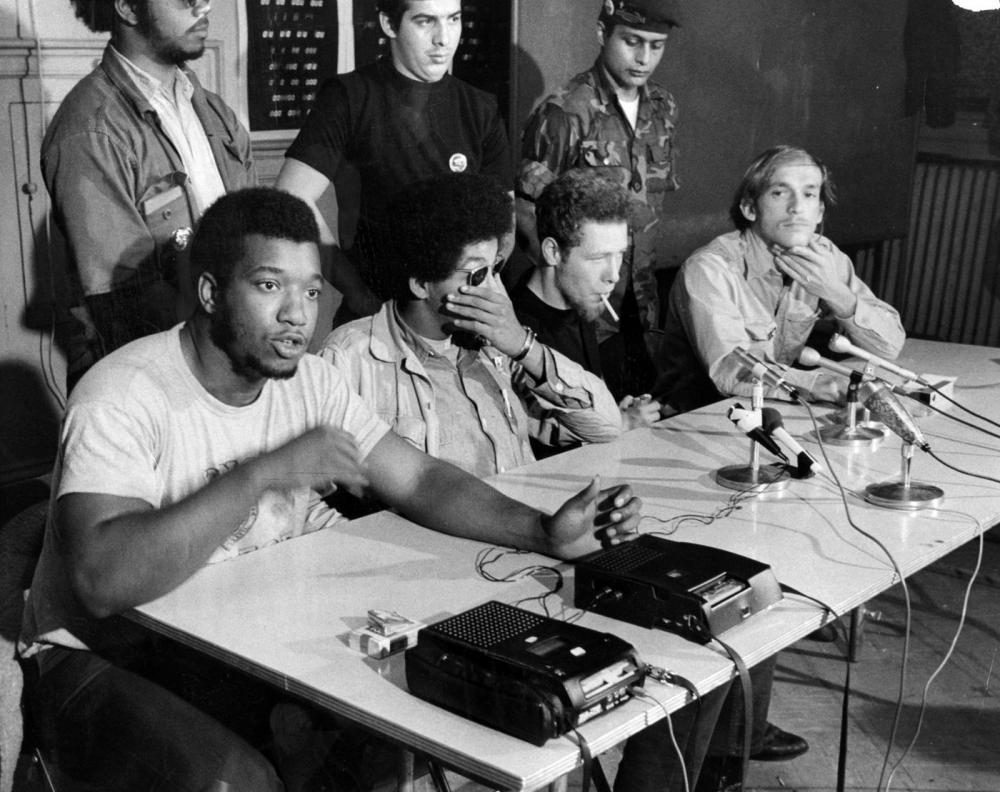
Dave Nystrom/Chicago Tribune
Under his leadership and through his own personal efforts, he brought basic classes in Marxism-Leninism to these groups, emphasizing the need to overthrow capitalism and the necessity for class unity. He did this while simultaneously building the Black Panther Party from a small group of a dozen to one of hundreds, with a base of thousands, particularly among the young black high school students in Chicago. Constantly, he stressed the need to bring new cadres forward as they built, for he often expressed the thought that his own life was in danger….
Hampton did all this while fighting for the regularity and expansion of the free breakfast program and for the new free people’s health center, dedicated this past Christmas Day (1969) to Jake Winters. Winters was one of his comrades who fell in battle with the fascist-minded police only weeks before Hampton’s own death.
Fred Hampton was just beginning to make his contribution to revolutionary struggle when he was killed. In his 21 years, he had already done more for the people, white and black, than most people in their lifetime. He will long be remembered for many things, his humor, his rapid but poetic speech, his warmth and kindness.
But mostly he will be remembered as a man of deeds—deeds performed for his people every moment of his short life….
The horror of his death and the lies of the district attorney are not the only cause of the outpouring of concern and outrage by the people. Equal to that is the nagging thought on the mind of everyone who knew anything about him: “It wasn’t the guy next door, but it was the power structure, Mayor Daley, and the industrialists. This, and his ability to work with everybody is why I guess they had to kill him,” as Karen Nye, a white nurse put it. Or as Joan Elbert observed, “Fred said that if there’s problems with blacks, they (the ruling class) can isolate it; but when you get white and black together, they have to deal with it. I think that’s why he was so dangerous to them and had to be killed.”
…
The Rev. Ralph Abernathy, president of the Southern Christian Leadership Conference, noted at Fred Hampton’s funeral that he had united the black community and important sections of whites through his death. “If you achieved this, you have not died in vain,” Abernathy said.
[Ted Pearson has been the Co-chairperson at Chicago Alliance Against Racist and Political Repression for 30 years.]
Fifty Years After the Police Murders of Black Panthers Fred Hampton and Mark Clark
by Norman Stockwell, Frances Madeson interviewing Jeffrey Haas
December 3, 2019
The Progressive
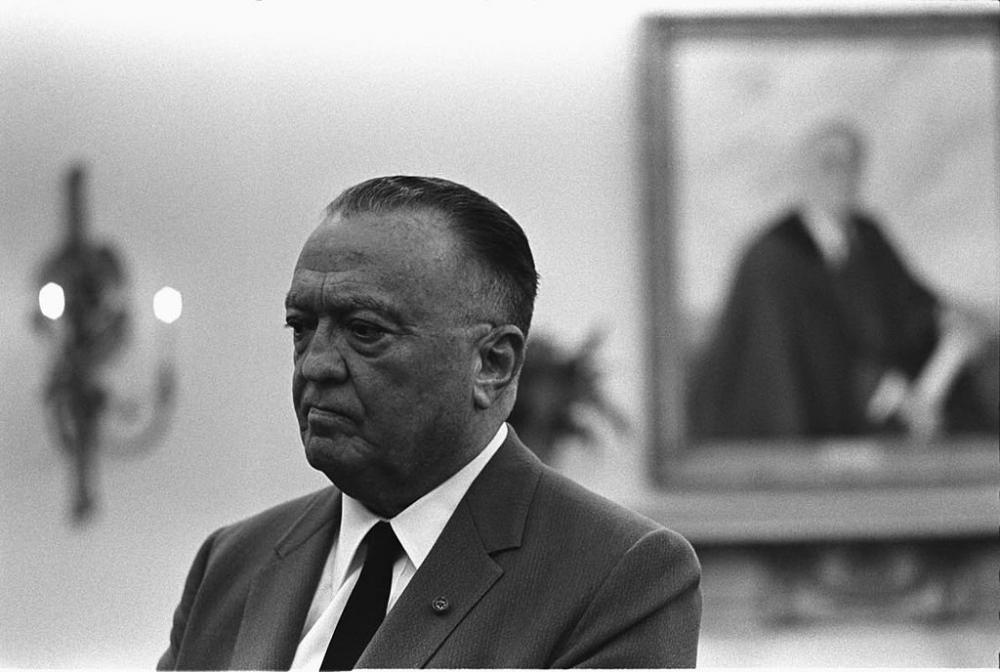
Yoichi R. Okamoto // The Progressive
Early in the morning of December 4, 1969, fourteen police officers executed a search warrant on a Chicago flat rented by the Black Panther Party. They were supposedly looking for illegal weapons. Instead, they shot and killed two people, and left four others wounded.
Fred Hampton, chair of the Black Panther Party of Illinois, died of two gunshots to the head. His murder, along with that of fellow Panther Mark Clark, sent waves of shock and outrage through their community. Hampton was a well-liked and charismatic leader at the age of only twenty-one. His death came in the last month of a decade that saw the murders of other prominent civil rights leaders including Medgar Evers in 1963, Malcolm X in 1965, and Reverend Martin Luther King Jr. in 1968.
In 1982, a civil rights suit brought by the families of the two slain men was settled for $1.85 million, with the money coming city, county, and federal authorities. The attorneys in that case were Jeffrey Haas and Flint Taylor.
This week, in commemoration of the fiftieth anniversary of the raid, Haas is reissuing his 2009 book, The Assassination of Fred Hampton: How the FBI and the Chicago Police Murdered a Black Panther. In the book’s introduction, Haas writes, “The need to protest, expose, and hold accountable those in power who violate our laws and personal liberties continues and remains a fundamental struggle of our society and any society.”
The Assassination of Fred Hampton
How the FBI and the Chicago Police Murdered a Black Panther
By Jeffrey Haas
Chicago Review Press; 400 pages
Trade Paper: $17.99
ISBN 9781641603218
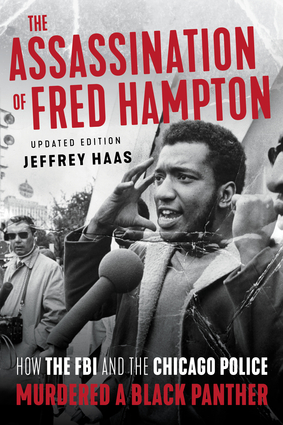
Haas, along with fellow attorney Flint Taylor and a team from the People’s Law Office, helped tie the Chicago murders to the FBI’s secret COINTELPRO project, in which director J. Edgar Hoover sought to “destroy, discredit, disrupt the activities of the Black Panther Party by any means necessary and prevent the rise of a Black Messiah.”
Haas has continued to fight for the rights of political protestors and advocates for change. Among other projects he has volunteered his legal skills on behalf of the water protectors opposing the Dakota Access Pipeline project in South Dakota.
Now a resident of Santa Fe, New Mexico, Haas travelled to Chicago this week for the book launch and other events on the fiftieth anniversary of the killings. Just before he left, Frances Madeson caught up with him in Santa Fe for a short conversation about the significance of the Hampton case today.
Q: Fred Hampton was not a well-known national leader. Why was he assassinated?
Jeffrey Haas: In the course of our thirteen-year lawsuit, including an eighteen-month trial, to expose what happened to Fred and the other Panthers that night, we learned that the government had a plan in place to deal with any black leaders emerging “who could unify and electrify the masses,” in the words of the FBI documents.
Fred was doing that. He had brought together a coalition of Puerto Ricans, Appalachians, and left people in Chicago to demand new things, including an end to police brutality and mass incarceration, community control of police, free breakfast programs, health clinics, and so forth.
In 1968 and 1969, he’d met with the Blackstone Rangers and the Black Gangster Disciples, two armed street gangs that had control of big areas of Chicago. Fred said to them, “Why are you preying on your own people? Why can’t we form a coalition?” And they did. In addition, Fred had already been in the prisons in Illinois and he was organizing the prisoners.
Fred’s assassination had a huge impact on the south and west sides of Chicago. Without young leaders like Fred to bring young black people together, including militant people but who also had a base in the community and felt like the Panthers had served the community, they were overrun by the crack epidemic, the drug epidemic and the control of gangs that followed.
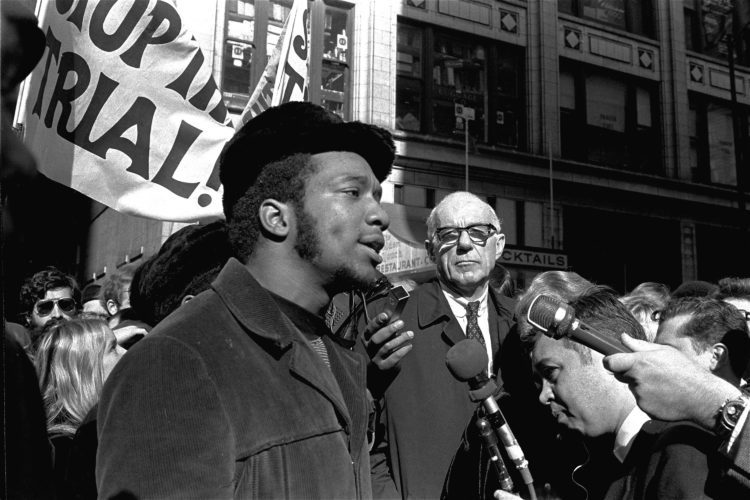
stf / AP // truthdig
Q: In 1982, you won a $1.85 million settlement for the Hampton and Clark families and the raid survivors. In 2018, Chicago paid out more than $113 million on police misconduct lawsuits, and more than a half a billion dollars over the past eight years. What is the significance of monetary damages?
Haas: As a deterrent, it’s really questionable as to how much money a city can afford to lose before they change police practices and training. That’s really an open question, I think.
Nevertheless, it’s important that victims of civil rights abuses have a forum, and that they collect compensatory damages for what they suffered. In the civil system, the victims are the plaintiffs and we can try to really expose, confront and change police practices, and get the information that hopefully will help the public decide that there needs to be regulation of the police.
But money damages are not enough. Our lawsuit was a long crusade, with many appeals, and it was ultimately successful. But no one ever did a day of time, even though we proved the conspiracy—no indictments, after all that. Fred’s mother Iberia told me, “They got away with murder,” and I couldn’t deny that.
Q: In your new Preface, you reference the 2014 police murder of twenty-year-old Laquan McDonald and the indictment and conviction of the officer who killed him. Why do you think it took forty-five years for a Chicago police officer to be convicted in one of these killings?
Haas: When Laquan’s body was prepared for his funeral, the mortician alerted people that he’d been shot sixteen times in the back and the side, indicating he may have been fleeing the police, not attacking the police. Investigative reporters began to get suspicious and it emerged there was a police video that had been hidden for two years. The video showing the murder by officer Jason Van Dyke was going to come out.
A real coalition came together and they demanded that Van Dyke be charged with murder, which had never happened before. So the prosecutor quickly indicted him because it came to light that she and then mayor Rahm Emanuel knew about this video, had seen it, but had kept it hidden.
Due to the pressure of the people who went to the police station, the courts and city hall over three years, the police chief was fired, the state’s attorney was defeated in a subsequent election and the mayor didn’t run again because it was clear that it would be the main campaign issue—why did he sit on this tape for so long?
The jury came back with a guilty verdict for second-degree murder and sixteen counts of aggravated battery, one for each shot. So, in a way, it was a political victory for the community, because the movement was so tenacious. And the fact that an officer can be charged and sentenced to substantial time will certainly have an impact on the officers willing to pull the trigger, so we see some things changing.
That Fred Hampton’s murder was exposed as an assassination and that the police covered it up also made it easier in the general public’s awareness that cops do this and they do cover for each other and the politicians cover for the police.
Q: Why, of all of the cases you have been involved in, did you decide to write a book on the assassination of Fred Hampton?
Haas: I feel it’s important for people to know who Fred Hampton is beyond the fact of his murder. He was an amazing charismatic young man, with a tremendous energy and vibrancy who said many unforgettable things that are inspiring to this day. For instance Fred said: “Peace to you . . . if you’re willing to fight for it.”
The Panthers had an analysis that said capitalism was the enemy of the people, and that until the people took that power away, they would be exploited. Fred said: “All power to the people because that’s where it belongs, in the hands of the people.” If that wasn’t clear in 1969, it’s even clearer today, when we see corporate greed destroying people of color’s communities, setting the world on fire—and it seems unstoppable.
I think that in 1969, Fred and many of us felt we were part of a worldwide resistance movement that was actually going to change that power. Now we’re in a counter-revolution, yet we see that people are arising everywhere. Fred and the Panthers didn’t say they were going to make the revolution, they said “we’re going to educate the people and the people are going to make the change.”
[Norman Stockwell is publisher of The Progressive.
Frances Madeson has written about liberation struggles in the United States and abroad, and is the author of the comic novel Cooperative Village.]
Fred Hampton - On The Importance Of Education Prior To Action
Play here

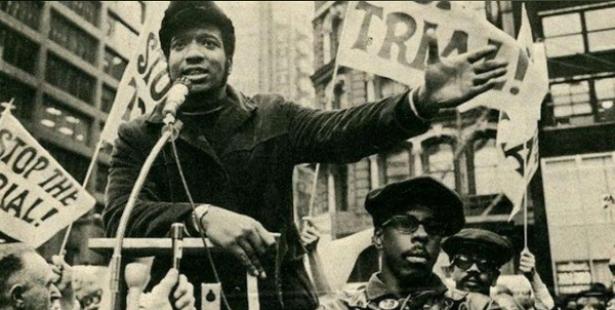
Spread the word